JF Ptak Science Books Post 1532
This is a supplement to some earlier posts on this blog relating to the possibilities of the invasion of America: Mapping the Invasion of America, 1942 (which is the most-viewed post from this blog, with over 500k readers), The Invasion of America, 1935, and The Invasion of America, 1942, Part II to name a few examples.
In the 27 May 1940 issue of Life magazine appeared an article on Franklin Roosevelt's call to American action in constructing an entirely new air force. For years the air corps arm of the American military lingered in a kind of low-numbers unresolved limbo--but by May of 1940, it became painfully obvious that something drastic must be done. By this point the European War was about eight months old, and the possibility of Nazi victory looked very real. After all, the Blitzkrieg had been very successfully employed in Poland, and in May was used in the invasions of Finland, Norway, Denmark, Belgium, the Netherlands and Luxembourg. And France, of course. By late May, 1940, France was already pretty much done, the Parisian capital falling weeks later on 23 June, with the country capitulating ten days later. May also saw the collapse of the British and French armies along France's northern coastline. (The rescue of the 350,000 troops on the beach and in the harbor of Dunkerque had not yet taken place (but would within the next few days). It was bad stuff.) In the light of the Nazi victories and the imminent fall of France, it was also time for people to start thinking about the invasion of England.
Roosevelt and his adviser knew that America was headed into conflict, and knew that the country needed to get onto a war-time production basis. One way to begin preparations was for FDR to call for the increased production of the newest and one of the most important aspects of modern warfare, the airplane. And not only an "increase" in production did the President call for, but a mountainous bump, an order of magnitude more in manufacturing of military planes. Earlier in 1938 the call for a 5,000-plane-a-year air force was shot down as being unrealistic--and perhaps so, even though the Nazis were just at the beginning of their outward thrust. So in May, 1940, Roosevelt stepped up and asked for 50,000 aircraft.
No doubt the war in Europe gave everyone great pause, or scared them silly. Two years before the number of 5,000 planes produced per year was seen as ridiculous--now the business of producing 50,000 a year seemed feasible--incredible, even, but the means of production were present, and so was the raw material and manpower. It was seen that of the 84 aircraft production plants then functioning only 23 were producing military planes, so there could be a modernization of existing plants as well as the construction of new aviation installations. The production totals for the year 1939-1940--1,247 aircraft, including 477 produced for the U.S. Army and Navy, 311 for Great Britain, and 459 for France--represented only a small percentage of what the existing factories could actually produce. (And it turned out of course to be just the case, as we can see from the production numbers in the "notes" section, below.)
There was also a certain amount of scare factor involved with waking up the American public to the needs for getting involved in the European conflict in the year-and-a-half before Pearl Harbor--that the Nazis wouldn't stop in Great Britain, and that "invaders" could and would attack the United States. The need for increasing American war production was not only to supply the allied forces in Europe for stopping Hitler, but also would keep the Nazis away from the United States. (Summarizing the points discussed by the President and other government officials, the map of the invasion of America looked something like the global view we see above.) So if Roosevelt couldn't stir the hearts and minds of the American public for keeping Europe aloft in American-built planes, then keeping the Nazis off Main Street might work.
What the map shows are the lines of attack for the un-named Nazi invaders--their aircraft making their way slowly across the Atlantic via Iceland-Greenland--Newfoundland, and across Europe -Africa-Cape Verde-Brazil-Paraguay-then across the Caribbean and right into Wilmington, North Carolina; and then of course all of the way across the Soviet Union to Alaska and then into Washington state. The plan was that these advanced forces would come in, establish an airfield, grow , and then move closer to the U.S., stopping to construct bases all along the way. The response, oddly enough, was for us to build "bombers" so that the airbases could be blown up. That would also extend the effective range of air coverage from the United States to deal with the very-slowly-approaching enemy. The circles on the map show the effective round-trip range of loaded American bombers and the territory that they could cover. In general the map, in its own way, portrayed the United States as approachable to foreign invasion. Some of this reasoning is a little inscrutable, but Washington was playing a game that needed to be won.
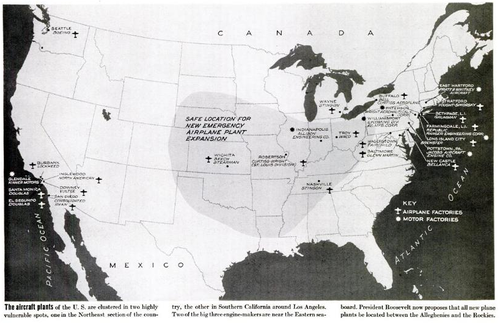
These interesting before and after pictures of a ramped-up aircraft production industry were to supply some proof that the job could be done, and that this factory could very well be a template that the dozens of others could follow:
[Aircraft production facility, "before"]
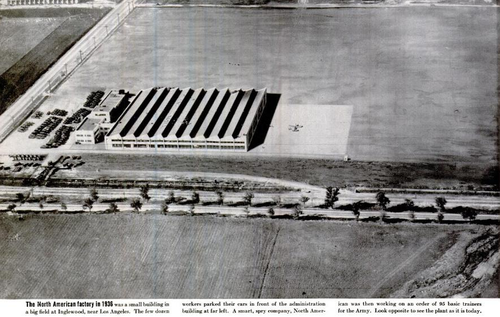 [Aircraft production facility, "after"]
[Aircraft production facility, "after"]
Notes
Production numbers for U.S. aircraft manufacturing, 1940-1945:
| Type of airplane | Total | 1940¹ | 1941 | 1942 | 1943 | 1944 | 1945² |
| Grand total | 295,959 | 3,611 | 18,466 | 46,907 | 84,853 | 96,270 | 45,852 |
| Combat airplanes | 200,443 | 1,771 | 8,395 | 24,669 | 53,183 | 74,564 | 37,861 |
| Very heavy bombers | 3,740 | - | - | 4 | 91 | 1,147 | 2,498 |
| Heavy bombers | 31,685 | 46 | 282 | 2,513 | 9,574 | 15,057 | 4,213 |
| Medium bombers | 21,461 | 52 | 762 | 4,040 | 7,256 | 6,732 | 2,619 |
| Light bombers | 39,986 | 453 | 2,617 | 5,954 | 11,848 | 12,376 | 6,738 |
| Fighters | 99,465 | 1,157 | 4,036 | 10,721 | 23,621 | 38,848 | 21,082 |
| Reconnaissance | 4,106 | 63 | 698 | 1,437 | 793 | 404 | 711 |
| Support airplanes | 95,516 | 1,840 | 10,071 | 22,238 | 31,670 | 21,706 | 7,991 |
| Transports | 23,900 | 164 | 525 | 1,887 | 6,913 | 9,925 | 4,486 |
| Trainers | 58,085 | 1,676 | 9,294 | 17,237 | 20,950 | 7,936 |
1,352 |

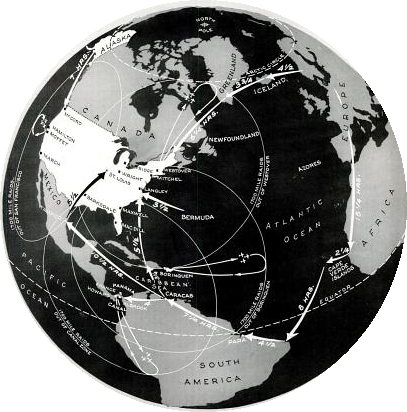
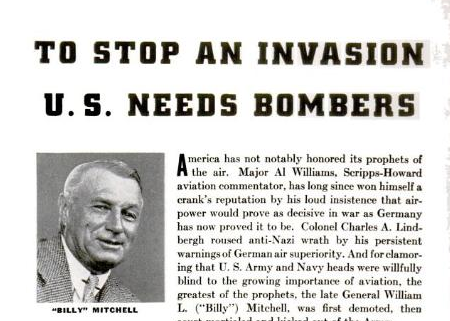
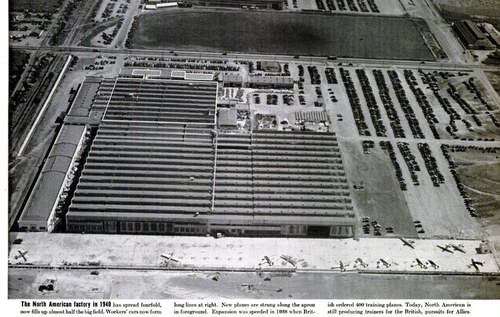

Comments